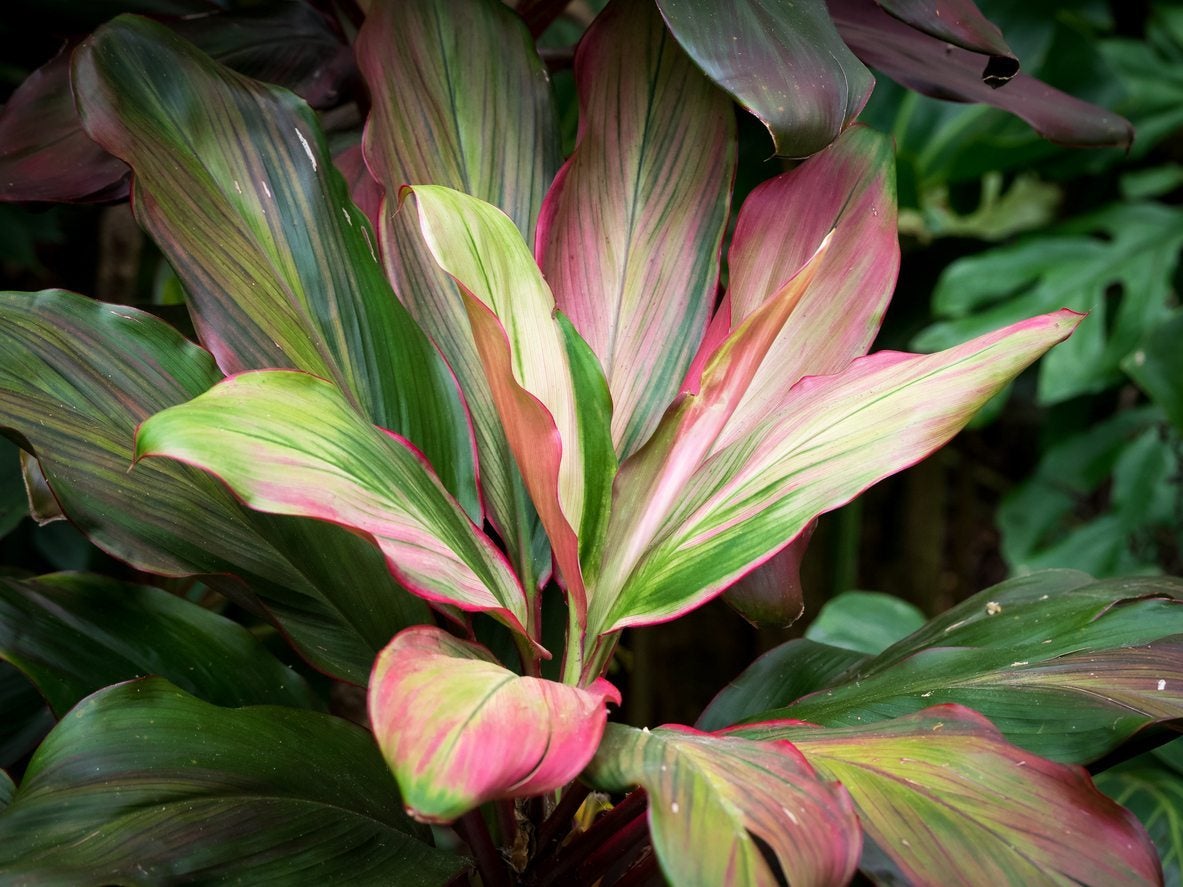Outdoor Ti Plant Care: Learn About Growing Ti Plants Outdoors


With common names like miracle plant, tree of kings, and Hawaiian good luck plant, it makes sense that Hawaiian Ti plants have become such popular accent plants for the home. Most of us welcome all the good luck we can get. However, Ti plants are not just grown for their positive folk names; their unique, dramatic foliage speaks for itself. This same eye-catching, evergreen foliage can be an excellent accent in the outdoor landscape as well. With such a tropical looking plant, many people skeptically question, “can you grow Ti plants outside?” Continue reading to learn about growing Ti plants in the landscape.
Can You Grow Ti Plants Outside?
Native to eastern Asia, Australia, and the Pacific Islands, Ti plants (Cordyline fruticosa and Cordyline terminalis) are hardy in U.S. hardiness zones 10 to 12. While they can handle a brief chill down to 30 degrees F. (-1 C.), they grow best where temperatures stay in a steady range between 65 and 95 degrees F. (18-35 C.). In cooler climates, they should be grown in pots that can be taken indoors through winter. Ti plants are extremely heat-tolerant; however, they cannot handle drought. They grow best in a moist location with partial shade but can handle full sun to dense shade. For the best foliage display, a light-filtered shade is recommended. Ti plants are mostly grown for their colorful, evergreen foliage. Depending on the variety, this foliage may be a dark, glossy green, a deep, glossy red, or have variegations of green, white, pink, and red. Variety names such as, ‘Firebrand,’ ‘Painter’s Palette,’ and ‘Oahu Rainbow’ describe their outstanding foliage displays. Ti plants can grow up to 10 feet (3 m.) tall and are usually 3 to 4 feet (1 m.) wide at maturity. In the landscape, they are used as specimen, accent, and foundation plants, as well as privacy hedges or screens.
Care of Outdoor Ti Plants
Ti plants grow best in slightly acidic soil. This soil should also be consistently moist, as Ti plants require a lot of moisture and cannot survive drought. However, if the site is too shady and soggy, Ti plants may be susceptible to root and stem rot, snail and slug damage, as well as leaf spot. Ti plants also do not tolerate salt spray. Outdoor Ti plants can easily be propagated by simple layering or divisions. Care of outdoor Ti plants is as simple as regularly watering them, applying a general purpose 20-10-20 fertilizer every three to four months, and regular trimming of dead or diseased foliage. Ti plants can be cut right back to the ground if pests or disease have become a problem. Common pests of outdoor Ti plants include:
Sign up for the Gardening Know How newsletter today and receive a free copy of our e-book "How to Grow Delicious Tomatoes".

Darcy is a former contributor to Gardening Know How. She is a professional landscape designer and gardening writer with experience in plant sales. An avid gardener, Darcy has a passion for sharing practical tips to help others grow.